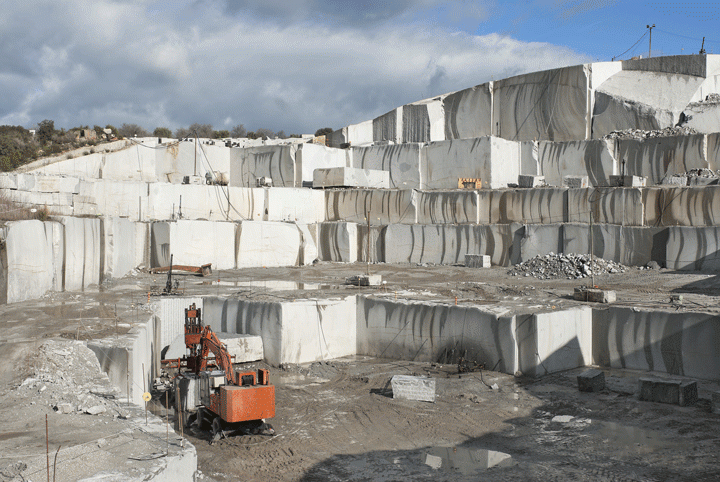Unlocking Natural Treasures: Granite Quarries in South Africa Unveiled
Unlocking Natural Treasures: Granite Quarries in South Africa Unveiled
Blog Article
Uncovering the Rich Background and Lasting Practices of Granite Quarrying
As we stand on the precipice of discovering the intricate tapestry of granite quarrying, a trip with time reveals not simply the physical act of extracting stone yet additionally the cultural and historic relevance woven right into the very material of this technique. From the old beginnings that laid the foundation for contemporary quarrying strategies to the lasting techniques that are forming the future of this sector, each carve mark on granite surfaces narrates waiting to be discovered (granite quarries in south africa). The tradition of granite quarrying stretches much beyond plain removal; it is a testimony to human resourcefulness, resilience, and the long-lasting allure of this impressive rock
Old Beginnings of Granite Quarrying
Dating back to ancient human beings, the technique of quarrying granite has been an indispensable component of human background and building development. The earliest evidence of granite quarrying go back to ancient Egypt, where large pyramids and detailed sculptures were crafted from this durable stone. The Egyptians used primitive tools to draw out granite blocks from quarries, showcasing the value of this product in their huge building and constructions.
Progressing in history, the Greeks also made significant contributions to the quarrying of granite. The Greeks used granite in various architectural marvels, such as temples and sculptures, showing their ability in shaping and carving this sturdy stone. The Romans additionally improved the methods of quarrying granite, employing advanced tools like chisels and hammers to remove and form granite for their legendary structures.
With the centuries, the method of quarrying granite has evolved, with modern innovations improving effectiveness while maintaining the classic allure of this natural rock - granite quarries in south africa. From ancient people to contemporary builders, the heritage of granite quarrying remains to form our globe
Development of Quarrying Techniques
The advancement of quarrying methods has been noted by a constant progression towards better effectiveness and accuracy in extracting granite. Early quarrying methods involved hands-on labor with standard tools such as knives, hammers, and wedges to extract granite blocks from the earth.
In even more recent times, the arrival of machinery changed the quarrying industry, allowing quicker removal rates and enhanced efficiency. Technologies such as ruby cable saws, high-pressure water jets, and pneumatic drills have become typical in modern-day quarries, enabling accurate cutting and minimized waste. Innovations in computer-controlled equipment and 3D modeling have enhanced quarrying operations, leading to very little ecological influence and improved sustainability methods. As the need for granite continues to increase, the development of quarrying strategies continues to be integral to meeting market requires find out this here efficiently and sustainably.
Social Significance of Granite
Granite holds a profound social value throughout different people because of its enduring presence in building work of arts and respected monoliths. From the majestic pyramids of Egypt to the intricate carvings of the Angkor Wat temple in Cambodia, granite has been a material of option for revealing majesty and long life in cultural heritage. In ancient Rome, granite columns decorated holy places and public buildings, signifying strength and permanence. The social importance of granite extends beyond its physical features; it symbolizes strength, security, and eternity, making it an icon of sustaining traditions and customs.

Sustainable Practices in Quarrying
Amidst the abundant history of granite quarrying and its cultural value exists a growing focus on lasting practices within the sector. As ecological recognition and issues about resource deficiency have increased worldwide, the quarrying sector has increasingly welcomed sustainable approaches to lessen its effect on the atmosphere and bordering areas.

Furthermore, improvement and rehab of quarry sites post-extraction are essential to sustainable practices. By restoring quarried areas to an published here all-natural or advantageous state, such as creating wildlife environments or entertainment spaces, quarriers can balance out the ecological footprint of their procedures and contribute favorably to the neighborhood environment.
Legacy of Granite Quarrying
With a historic backdrop soaked in craftsmanship and commercial development, what withstanding influence has granite quarrying left on the landscape of modern-day culture? The tradition of granite quarrying goes beyond simple removal practices; it has actually formed architectural wonders, metropolitan landscapes, and cultural heritage worldwide. The durable nature of granite has actually made it a favored choice for monoliths, buildings, and infrastructure, standing as a testimony to the skill and artistry of quarry employees across generations.
Moreover, the financial footprint of granite quarrying can not be forgotten. The market remains to provide work opportunities and drive neighborhood economic situations in regions where granite removal is widespread. It has additionally spurred technical innovations in quarrying methods and equipment, leading to a lot more efficient and lasting practices.
In regards to sustainability, the legacy of granite quarrying includes initiatives to minimize environmental effects via reclamation jobs and accountable source management. By balancing economic rate of interests with ecological stewardship, the industry strives to make sure that future generations can remain to take advantage of this enduring natural resource.
Final Thought

Report this page